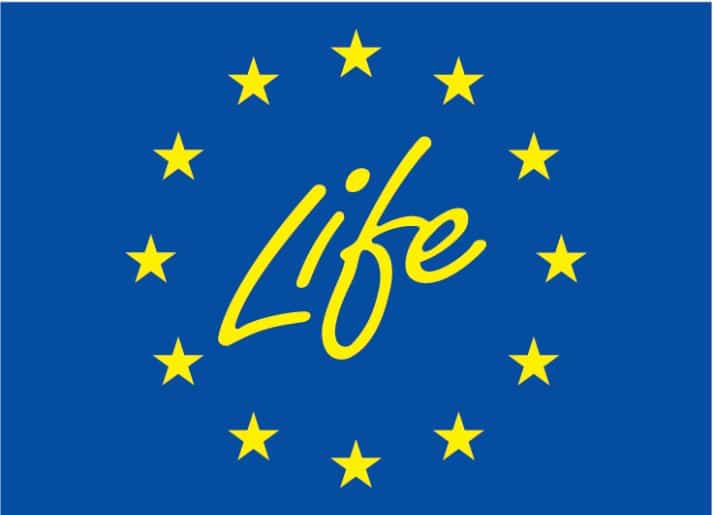There is LIFE after LIFE: origin and objectives of the new LIFE COASE project
This is the first installment of the Topic of the Month: Is emissions trading fit for Europe’s net zero objective?
EU Emissions Trading Systems
When I joined FSR as Director of the new Climate area back in September 2017, the very first workshop I directed was a meeting among the regulators of the main Emissions Trading Systems (ETSs) worldwide. On that occasion, I raised the idea of creating an observatory on ETSs, since I had experienced through my own research that there were some gaps in the data at disposal and in our knowledge and understanding of carbon markets. To fill those gaps, I felt that we needed to join forces in a collaborative spirit between researchers, policy makers, and regulators of various ETS jurisdictions.
Many years have passed since then, and I’m still here studying the EU ETS and the other existing ETSs. Unexpectedly, my own professional life ended up being intertwined with that of the EU ETS. Indeed, like a living creature, the EU ETS keeps evolving over time, making it a sort of moving target that is difficult to hit and, therefore, fascinating to study. This motivated me and my whole team at FSR to keep working on the issue and led to LIFE COASE, a new LIFE project co-funded by the EU Life Programme of the European Commission. It builds upon our previous LIFE SIDE project (2016-2018) and LIFE DICET project (2019-2022) – so that, in our case, we can indeed say that there is LIFE after LIFE.
The acronym COASE stands for Collaborative Observatory for ASsessment of the EU ETS, and is a clear tribute to Nobel Prize laureate Ronald Coase who made a fundamental contribution to the theory underlying the functioning of the ETSs. As the project name suggests, the LIFE COASE goes back to the original idea of a collaborative observatory on ETSs launched in that very first meeting, thus somehow closing a circle. The Observatory is collaborative, in that many different international experts will contribute to its various outputs and activities trying to fill the gaps that still exist in the ETS literature and practice. Indeed, some key elements are missing in the toolbox for monitoring the EU ETS.
Firstly, there are limited impact indicators for detecting environmental and economic effects, and a lack of carbon market indicators for capturing structural changes within the carbon market. Secondly, another well-known and severe limitation for assessing the environmental effectiveness of the EU ETS is the scarcity of good firm-level data on climate-related investments. This data is essential to empirically assess both the impact of the EU ETS on low-carbon investment and firms’ related behaviour more generally. Thirdly, the European Union Transaction Log (EUTL) is a rich, publicly available information source that could be exploited to analyse the EU ETS much more effectively and widely if it was made more user-friendly. Finally, there is a lack of international cooperation across ETS models which leads to systems being developed in isolation, inhibiting integration. Knowledge-sharing and coordination are key to integrate markets and to make carbon pricing a global climate policy instrument. LIFE COASE intends to address some of the critical elements that are needed for making progress on emissions trading.
The LIFE COASE project
In short, the project will:
- Improve the usability of data from the EU Transaction Log (EUTL): Specifically, the project will deliver new matchings between the EUTL data and companies’ registries. The expectation is that these matchings will facilitate further economic studies and increase the use of the EUTL by researchers and policymakers.
- Create a reference point for regulators to assess the functioning of the EU ETS: In order to monitor and assess the environmental and economic impacts of the EU ETS as well as the structural changes within its carbon market, the project will produce new indicators.
- Present and compare model-based assessments of the EU ETS: More sophisticated model-based assessments of the EU ETS are needed to assess the effectiveness of emissions trading systems and to predict the impact of different policy and regulatory options. The project will organise a series of annual conferences and workshops devoted to presenting new studies on ex-post and ex-ante assessments of ETSs.
- Provide new data on firms’ climate-related investments and behaviour: In collaboration with the European Investment Bank (EIB), a survey will be conducted to collect valuable information from companies both covered and not covered by the EU ETS. The objective is to improve the understanding of how companies behave and react with respect to the EU ETS.
- Promote the integration of the EU ETS with other emissions trading systems: This will be pursued through a regular dialogue on international carbon market cooperation between the EU and partner jurisdictions, specifically undertaken through the forum of the Net Zero Carbon Market Policy Dialogue (NZECMPD).
- Disseminate knowledge on carbon markets: The LIFE COASE project will produce openly accessible datasets, blog posts, podcasts, policy briefs, publications, and events with a view to improving and broadening the understanding of the EU ETS and wider carbon markets. This in turn will facilitate building a strong international network of experts as well as connecting with other LIFE projects and engaging industries to improve the understanding of how the EU ETS impacts various sectors.
The LIFE COASE project started in January 2023 and will run until December 2025. As with any ambitious project, it will certainly be a challenging and fascinating journey, and I am confident it will also be a productive one that will eventually improve our understanding of carbon markets, one of the key levers for achieving climate neutrality.
Dive deeper in our past projects:
Related publications
- Verde S., Galdi G., Alloisio I., Borghesi S., (2021), “The EU ETS and its companion policies: any insight for China’s ETS?”, Environment and Development Economics
- Borghesi S., Franco C., Marin G., (2020), “Outward Foreign Direct Investments Patterns of Italian Firms in the EU ETS”, The Scandinavian Journal of Economics, vol. 122 (1), 219-256
- Borghesi S., Flori A. (2019) “With or without U(K): a pre-Brexit network analysis of the EU ETS”, PLOS ONE, 14(9): e0221587.
- Borghesi S., Flori A. (2018) “EU ETS Facets in the Net: Structure and Evolution of the EU ETS Network”, Energy Economics, 75, 602-635.
- Verde S., Borghesi S., (2022), “The International Dimension of the EU Emissions Trading System: Bringing the Pieces Together”, Environmental and Resource Economics, 83, 23-46. https://doi.org/10.1007/s10640-022-00705-x







